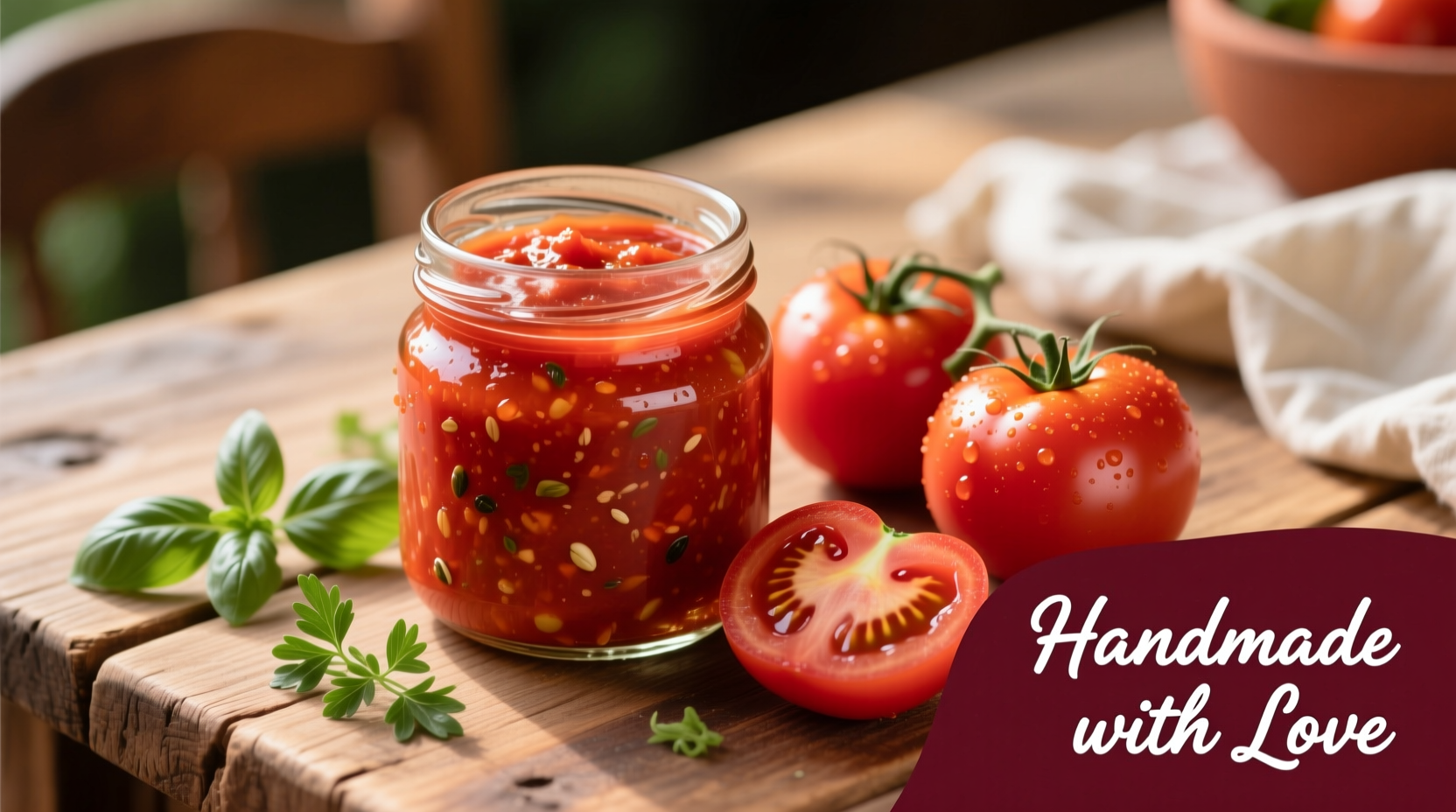Make perfect homemade tomato puree by simmering ripe Roma tomatoes with a pinch of salt for 45-60 minutes until fully broken down, then blending until smooth. This simple stovetop method yields rich, versatile puree without added preservatives—ideal for sauces, soups, and stews. Properly canned, it keeps for up to 1 year.
Creating vibrant tomato puree from scratch transforms ordinary dishes into culinary masterpieces. Unlike store-bought versions loaded with additives, homemade puree delivers intense flavor and complete control over ingredients. Whether you're preparing pizza sauce, enriching soups, or preserving summer's bounty, this guide provides the exact techniques professional chefs use to extract maximum flavor from tomatoes.
Why Homemade Tomato Puree Beats Store-Bought
Commercial tomato purees often contain citric acid, calcium chloride, and preservatives to extend shelf life. When you make your own, you control:
- Natural sweetness without added sugar
- Texture tailored to your recipe needs
- Zero artificial preservatives
- Seasonal freshness captured at peak ripeness
| Tomato Variety | Water Content | Best For |
|---|---|---|
| Roma/Plum | 85-90% | Thick purees, sauces (ideal for canning) |
| Vine-Ripened | 92-95% | Fresh applications, requires longer reduction |
| Cherry | 94-96% | Sweet sauces, needs significant straining |
According to USDA food safety guidelines, Roma tomatoes' lower water content (85-90% versus 94-96% in cherry varieties) creates a more stable product for canning. This reduces spoilage risk while concentrating natural sugars—critical for safe home preservation.
Essential Tools You Already Own
No special equipment needed for authentic tomato puree:
- Heavy-bottomed pot (prevents scorching during long simmers)
- Wooden spoon (gentle on tomato skins)
- Fine-mesh strainer (removes seeds and skins)
- Immersion blender (safest for hot liquids)
Step-by-Step Cooking Process
Preparation Phase (10 minutes)
- Wash 4 lbs ripe Roma tomatoes—no need to peel
- Remove cores and quarter tomatoes
- Add to cold pot with 1 tsp salt (draws out moisture)
- Include 1 tbsp lemon juice per quart for safe pH levels
Cooking Timeline (45-60 minutes)
| Time | Visual Indicator | Action Required |
|---|---|---|
| 0-15 min | Tomatoes release liquid | Stir occasionally, medium heat |
| 15-30 min | Liquid reduces by half | Lower to medium-low, stir every 5 min |
| 30-45 min | Thick paste forms | Stir constantly to prevent sticking |
| 45-60 min | Deep red color, no liquid separation | Remove from heat immediately |
This cooking timeline follows food science principles documented by the National Center for Home Food Preservation. The critical 30-45 minute window allows pectin breakdown while preserving lycopene—the compound responsible for tomatoes' rich color and health benefits.
Finishing Techniques
- Cool puree 10 minutes (prevents steam burns during blending)
- Blend with immersion blender until completely smooth
- Pass through fine-mesh strainer for seedless texture
- Return to low heat 5 minutes to thicken further if needed

Storage Solutions That Last
Proper storage maintains flavor and ensures food safety:
- Refrigeration: Keeps 5-7 days in airtight container
- Freezing: Portion into ice cube trays, then transfer to bags (6 months)
- Canning: Process pints 35 minutes in boiling water bath (1 year shelf life)
The University of California Cooperative Extension confirms that adding lemon juice (1 tbsp per quart) maintains safe acidity levels below pH 4.6—critical for preventing botulism in home-canned products.
Troubleshooting Common Issues
Problem: Puree tastes bitter
Solution: Add 1/4 tsp baking soda during final simmer—neutralizes acidity without altering flavor
Problem: Too watery after cooking
Solution: Return to medium heat uncovered, stirring constantly until thickened
Problem: Darkened color during storage
Solution: Ensure headspace is exactly 1/2 inch when canning—excess air causes oxidation
Professional Flavor Enhancements
Elevate your puree with chef-approved additions:
- 1 small onion, finely diced (adds sweetness without overpowering)
- 2 garlic cloves, smashed (infuses subtle depth)
- 1 tsp dried oregano (complements tomato's earthiness)
Add these during the first 15 minutes of cooking, then remove garlic before blending. Avoid fresh herbs—they turn bitter during long simmers.











 浙公网安备
33010002000092号
浙公网安备
33010002000092号 浙B2-20120091-4
浙B2-20120091-4